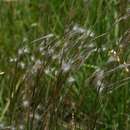en
names in breadcrumbs


Andropogon (common names: beard grass, bluestem grass, broomsedge) is a widespread genus of plants in the grass family, native to much of Asia, Africa, and the Americas, as well as Southern Europe and various oceanic islands.[4][5][6][7][8]
Over 100 species have been described.[3][4][9]
Many species once included in Andropogon are now regarded as better suited to other genera, including Agenium, Anadelphia, Apluda, Arthraxon, Bothriochloa, Capeochloa, Capillipedium, Chrysopogon, Cymbopogon, Dichanthium, Diheteropogon, Elionurus, Elymandra, Eragrostis, Eulalia, Garnotia, Gymnopogon, Hemarthria, Heteropogon, Hyparrhenia, Hyperthelia, Ischaemum, Parahyparrhenia, Pentameris, Polytrias, Pseudopogonatherum, Pseudosorghum, Saccharum, Schizachyrium, Sorghastrum, Sorghum, Spodiopogon, Themeda, and Trachypogon.[3]
{{cite web}}: CS1 maint: others (link) Note that this website has been superseded by World Flora Online Andropogon (common names: beard grass, bluestem grass, broomsedge) is a widespread genus of plants in the grass family, native to much of Asia, Africa, and the Americas, as well as Southern Europe and various oceanic islands.
Over 100 species have been described.